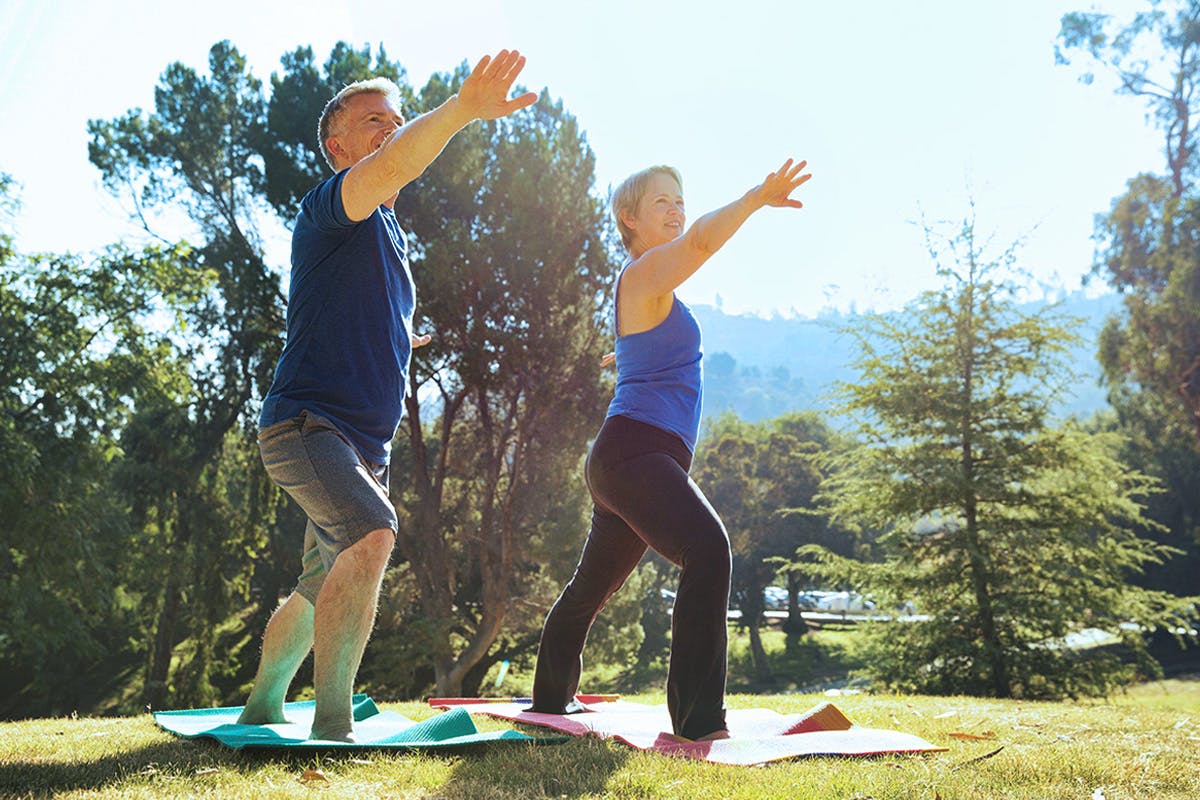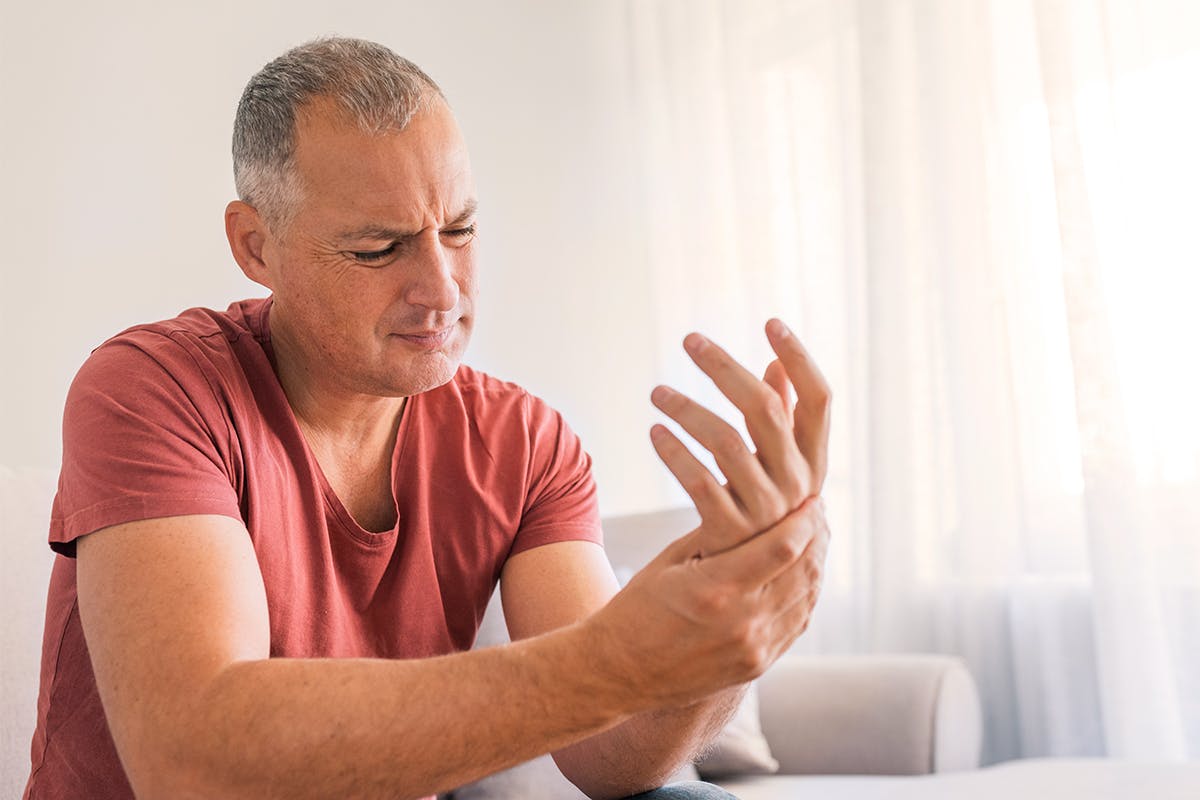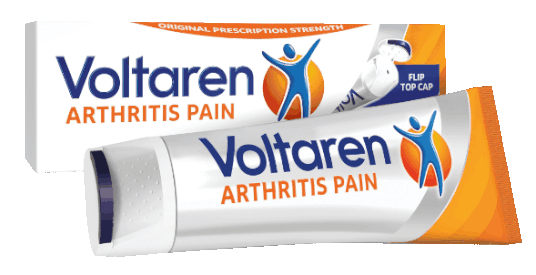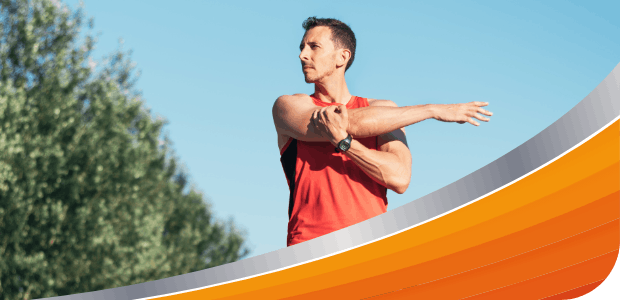Exercises for Lower Back Arthritis
/voltaren-lower-back-exercises-1200.jpg?auto=format)
If you have arthritis, you may not feel like exercising, especially while experiencing back pain. However, people with arthritis who exercise regularly report less pain, improved energy, and better overall function.2 Weak muscles, stiff joints, and poor balance may be made worse by physical inactivity. By choosing low-intensity exercises for arthritis, you’ll reduce the risk of injury while benefiting from physical activity that eases symptoms.
Types of Lower Back Arthritis Exercises
Not every type of exercise helps soothe arthritis symptoms—many exercises may actually worsen your pain.2 Competitive or high-intensity physical activity typically requires longer durations and puts stress on your affected joints, but that doesn’t mean you’ll need to forgo all exercise.2 When choosing the right arthritis exercises, aim for a balance of therapeutic exercises recommended by medical professionals and recreational exercises like walking, golfing, or swimming.2
Recreational exercises that have a low risk of injury and don’t place stress on your affected joints are typically safe for people with arthritis, but in most cases, they should be supplemented with therapeutic exercises, like lower back exercises.2 For people with arthritis, there are four main categories that therapeutic exercises fall under and each category includes exercises targeting the lower back.
Flexibility Exercises
Stretching exercises and active range-of-motion (AROM) exercises help improve the flexibility of your affected joints and their surrounding muscles, including your lower back.2 Improved flexibility can help your posture, improve your daily function, and lower the risk of injuries.2 Typically, it’s recommended to do flexibility exercises in the morning to help get your joints moving before you begin your daily activities.2
Strengthening Exercises
Strengthening exercises require your muscles to work a bit harder than flexibility stretches.2 Improving your muscle strength provides better joint support and reduces the stress placed on joints affected by arthritis.2 Stronger muscles also help improve your daily function and can even help reduce bone loss related to inactivity.2
Aerobic Exercises
Aerobic exercise helps improve heart, lung, and muscle function by using the largest muscles in your body in a repetitive and rhythmic manner. Exercises safe for people with arthritis include walking, bicycling, aerobic dance, and swimming. Adults under 64 years old should aim for 150 minutes of aerobic exercise each week, ideally spread over multiple days.2
Body Awareness Exercises
Although often overlooked, body awareness exercises are just as important as the other forms of exercise.2 These activities improve posture, balance, and coordination. Tai chi and yoga are two popular activities that incorporate body awareness movements.2 Joints and muscles affected by arthritis often impair a person’s coordination and balance, leading to an increased risk of falling.2 Safely practicing body awareness exercises can help reduce the risk of injury.
Tips for Stretching Safely with Arthritis
Before exercising or stretching, remember to follow these tips to ensure you maximize their positive effects and help avoid injury.
- Stretch until you feel gentle pulling your muscles and then hold.
- If stretching becomes painful, stop the exercise. Although you should feel some strain on your muscles, it should never feel painful.
- Stretch gently and do not bounce in each stretch.
- Breathe naturally and avoid holding your breath.
- Increase the depth of your stretches over time.
Stretches and Exercises for Lower Back Arthritis
Low-intensity stretches and exercises help you maintain strength and range of motion in your neck and back.3 These stretches are ideal for people with lower back pain from arthritis.3 For the best effect, repeat each stretch several times in a row.
Marionette Stretch
Begin this stretch by sitting in a chair with your hands resting on your lap. Imagine a string attached to the top of your head, like a marionette. Allow the imaginary string to pull your body up toward the ceiling while keeping your chin slightly tucked. Hold this stretch for 3 to 5 seconds before relaxing.
Side-Bend Stretch
Sitting upright towards the edge of a chair, lift your right arm above your head as high as you can without feeling discomfort. Lean from your hips to the left and hold for 5 to 8 seconds with your thumbs pointing back. Repeat on both sides.
Trunk Rotation
Start by sitting up in a chair with your arms crossed against your chest and your feet flat on the floor. Keeping your lower body still and neck in line with your abdomen, slowly rotate at the waist to one side and pause. Return to the starting position before repeating multiple times to each side.
Bridge Without Leg Extension
Lie down on a mat with your knees bent and your back to the floor. Keep your feet flat with your arms by your sides and palms down. Tightening your abs, press down into your feet and raise your hips off the mat. At the top of this move, squeeze your buttocks and pause for 3 to 5 seconds. Slowly return to the starting position before repeating several times.
Other Ways to Ease Arthritis Symptoms
Lower back exercises can help soothe your arthritis symptoms, but they likely won’t completely take your pain away. The treatment for spinal arthritis depends on factors like your age, level of pain, and other types of arthritis you may experience. Nonsurgical treatments for spinal arthritis include:1
- Nonsteroidal anti-inflammatory drugs (NSAIDs) and corticosteroids to reduce swelling and pain
- Physical therapy, including therapeutic exercises, to improve strength and range of motion
- Lifestyle changes to reduce stress on your spine, like quitting smoking or improving posture
For some people with spinal arthritis, doctors may recommend surgery to decompress the spinal cord or stabilize the spine.1 People with spinal arthritis often have arthritis in other areas of their bodies that can be managed with other treatments. Beyond lower back exercises, there’s a wide range of exercises for arthritis that target wrist, elbow, or knee pain. While Voltaren is not intended for use on the back or hips, this pain-relieving gel can help you maintain your daily routine by relieving pain in other parts of your body, like your hands, wrists, elbows, knees, ankles, and feet.

Natural Remedies for Arthritis Pain Relief
Alongside leading an active lifestyle, you may find some arthritis pain relief with natural treatments. Here are some natural remedies that are worth a try!

What Are the Symptoms of Arthritis?
Arthritis feels different to everyone—you will likely have physical symptoms such as pain and stiffness. You might also notice emotional ups and downs as you manage this chronic condition.
See How Voltaren Can Help
Save Money on Your Next Purchase.

Use as directed.
Feel the Joy of Movement
An alternative to pills, Voltaren penetrates deep to target arthritis pain at the source to deliver clinically-proven nonsteroidal anti-inflammatory medicine for powerful relief with a proven safety profile.

